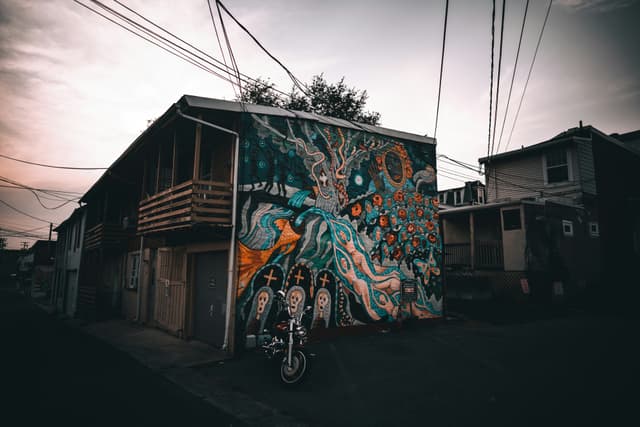Comics have long been seen as a form of entertainment for children, but over the decades, they have evolved into one of the most influential cultural forces in the world. This article explores the role of comics in shaping global culture, from their early roots to their current dominance in movies, fashion, and beyond.
Early Beginnings: The Birth of Modern Comics
The story of modern comics begins in the late 19th and early 20th centuries with the creation of comic strips in newspapers. Pioneers like Richard F. Outcault, with his iconic creation The Yellow Kid, and George Herriman, whose Krazy Kat redefined the medium, set the foundation for what would become an important cultural phenomenon.
In the 1930s, comic books began to emerge as a new format, with the first superhero comic, Action Comics #1, featuring the debut of Superman, marking the birth of the modern superhero genre. Created by Jerry Siegel and Joe Shuster, Superman became not just a cultural icon, but also a symbol of the hope and idealism that would define much of 20th-century American culture.
By the 1940s and 1950s, superheroes like Batman, Wonder Woman, and Captain America were household names, representing ideals of justice, heroism, and patriotism. The post-war era saw comics grow in popularity, with publishers like DC Comics and Marvel Comics gaining dominance in the industry.
The Rise of Marvel and the Golden Age of Superheroes
In the 1960s, the creation of characters like Spider-Man, the X-Men, and the Avengers by writers such as Stan Lee and artists like Jack Kirby transformed the comic book landscape. Marvel Comics, in particular, revolutionized the genre by creating superheroes who were not only larger-than-life figures but also relatable, flawed human beings. Spider-Man, for example, dealt with issues like high school bullying, relationships, and financial struggles—topics that resonated deeply with readers.
The cultural impact of Marvel Comics cannot be overstated. Marvel superheroes were no longer just fantasy figures—they became reflections of societal issues. The X-Men, for instance, explored themes of prejudice, discrimination, and civil rights, resonating with the ongoing struggles of marginalized groups in the 1960s and 1970s.
During this period, comics began to attract a wider and more diverse audience. No longer seen solely as a medium for children, comic books became an important part of the cultural fabric, inspiring art, literature, and even politics.
The Golden Age of Animation: Comics in Cartoons
While comic books were growing in popularity, the 1940s also saw the rise of comic strips and characters in animated form. Characters like Popeye, Betty Boop, and Superman were brought to life on the big screen in animated shorts, reaching a whole new audience and establishing comics as an entertainment medium that transcended the printed page.
Animation studios like Warner Bros., Disney, and Fleischer Studios played pivotal roles in transforming the comic world into animation, paving the way for the future success of animated superheroes in television and film. Superman and Batman, among others, became iconic in their animated forms, with Superman's animated series in the 1940s laying the groundwork for later animated adaptations of comic book heroes.
The integration of comics and animation also led to a greater appreciation for the artistic value of comics. The marriage of visual storytelling with animation techniques helped elevate the medium, showing its potential as a serious and culturally significant art form.
The Darker Side of Comics: Graphic Novels and Alternative Comics
The 1980s and 1990s brought about a shift in how comics were perceived and consumed. Graphic novels emerged as a new format for telling more mature, complex stories. Titles like Watchmen by Alan Moore and Dave Gibbons, The Dark Knight Returns by Frank Miller, and Maus by Art Spiegelman pushed the boundaries of the comic book medium by exploring deep themes like political corruption, trauma, and war.
These graphic novels were not just for kids—they were serious works of literature that attracted a more mature, intellectual audience. Maus, for example, which depicted the Holocaust through the lens of animals, won a Pulitzer Prize, cementing the place of comics in the world of high art.
Meanwhile, alternative comics and indie creators began to find a voice in the medium, breaking away from the traditional superhero genre. Writers and artists like Daniel Clowes and Chris Ware created comics that were more introspective and reflective of the complexities of modern life, paving the way for the diverse and inclusive comics landscape we see today.
Comics Enter the Digital Age: Webcomics and Streaming
In the 21st century, the rise of the internet and digital media has radically transformed the world of comics. Webcomics have become an increasingly popular way for artists to reach audiences directly, bypassing traditional publishing routes. Platforms like Webtoon and Tapas have created spaces for creators to share their work with a global audience, giving rise to a new generation of storytellers and comic enthusiasts.
Additionally, streaming services like Netflix and Disney+ have capitalized on the ever-growing popularity of comic book adaptations. The success of the Marvel Cinematic Universe (MCU) and DC Extended Universe (DCEU) has led to a boom in superhero-based television shows and films. The MCU, in particular, has become one of the highest-grossing film franchises of all time, with movies like Avengers: Endgame drawing millions of fans from all corners of the world.
The global popularity of comic-based media has had a profound effect on pop culture, influencing everything from fashion to language. Comic conventions like San Diego Comic-Con have become massive cultural events, drawing thousands of fans, creators, and celebrities together to celebrate the world of comics, television, and film.
The Cultural Legacy of Comics
Today, comics continue to be an integral part of global culture. Whether it’s the blockbuster success of superhero films, the rise of graphic novels, or the vast world of webcomics, comics are no longer confined to a niche audience. They have become a mainstream cultural force, influencing everything from literature to fashion, art, and even politics.
Comic book characters like Superman, Batman, and Wonder Woman are not just icons—they are cultural symbols, representing ideals of justice, hope, and perseverance. The themes explored in comics, whether they are about social justice, personal growth, or political activism, continue to resonate with readers around the world.
Moreover, the increasingly global nature of comics has led to a greater diversity of voices in the industry. Artists and writers from all backgrounds are now contributing to the medium, ensuring that comics remain a reflection of the world’s diverse cultures, perspectives, and experiences.
The Everlasting Power of Comics
From the comic strips of the early 20th century to the modern-day blockbusters of the MCU, comics have had an enduring impact on culture. They have evolved from simple entertainment into a cultural force that transcends mediums and borders. As new generations of creators continue to push the boundaries of the medium, it’s clear that comics will remain a vital part of global culture for many years to come.
Loading...



